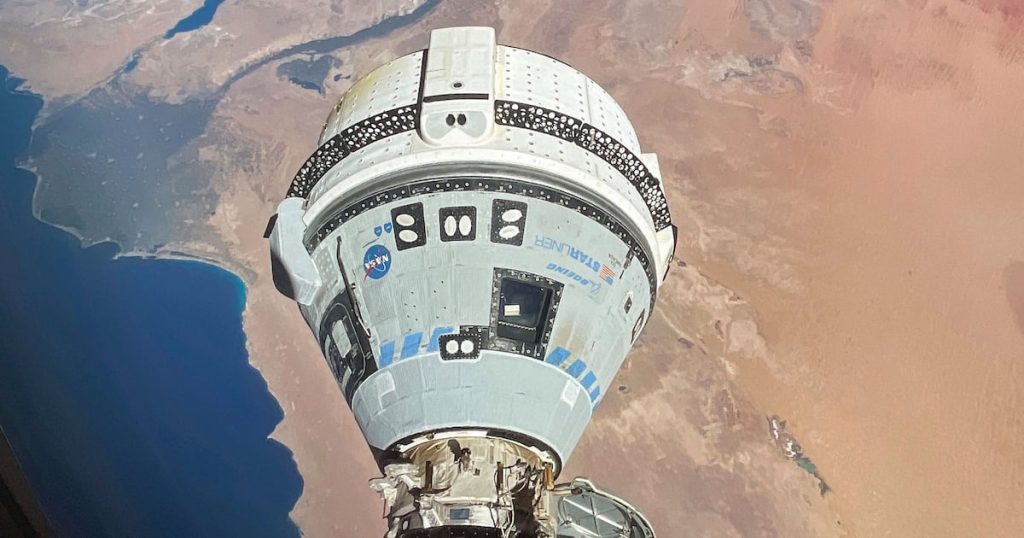More than 50 days into what was originally a 10-day mission, NASA and Boeing officials said they are preparing for a NASA review this week of the flight readiness of Boeing’s Starliner space capsule, which experienced multiple problems during its first crewed flight to the International Space Station on June 5.
After a test firing of the Starliner spacecraft’s thrusters when it docked on Saturday, and weeks of tests on the ground to identify problems with the small thrusters that help the spacecraft navigate and steer, mission leaders say they are ready to compile the data they’ve collected and submit it for review. They expressed optimism that the spacecraft will be able to safely transport veteran NASA astronauts Suni Williams and Butch Wilmore back to Earth to complete the long-delayed mission.
“My job is to provide a safe vehicle to bring our crew home,” Mark Nappi, vice president and program manager for Boeing’s commercial crew programs, said at a press conference last Thursday. “We’re confident we have a good vehicle to bring our crew home. We just need to take the next step to present that information to everyone else.”
Previous NASA reports detailed that five of Starliner’s 28 maneuvering thrusters did not function as expected when the spacecraft docked with the space station on June 6. Engineers also identified five small helium leaks, some of which were detected before the spacecraft launched. Helium is used in the capsule’s thruster ignition procedure. The issues have led to multiple delays of Starliner’s return flight.
Ground tests were conducted at NASA’s White Sands Test Facility in New Mexico to attempt to replicate the conditions that caused the thruster failure. Four of the failed units have been brought back online and appear to be operating within expected parameters, but one of the thrusters has been shut down for the remainder of the mission. Officials say they believe the thruster failure was due to unexpected levels of heat generation and have identified several causes that they are continuing to investigate.
When will Starliner return to Earth?
If the spacecraft gets the green light through NASA’s flight readiness review process, Starliner will prepare for its return flight in August. If the spacecraft is deemed not safe to bring Williams and Wilmore home, NASA Commercial Crew Program Manager Steve Stich noted that the spacecraft has a backup contingency plan in place, thanks to SpaceX’s Dragon crew capsule program, which has completed nearly 10 missions to ferry astronauts to the ISS and back.
“Obviously, the luxury of our program right now is that we have two different systems operating,” Stich said at a press conference last week. “When that time comes, and I don’t want to get into the specifics of what we’re planning until that time comes, but the benefit of having two different space transportation systems, Dragon and Starliner, is that we can use them as backups.”
Stich and Nappi previously said Starliner has been approved for use as an emergency return vehicle in case an unexpected event occurs on the space station and an evacuation is necessary, with Williams and Wilmore being the first choice to return in the Boeing capsule. Currently, including Starliner, there are six spacecraft docked to the ISS, and two of them, the SpaceX Dragon and Russia’s Soyuz MS-25 crewship, can return astronauts to Earth in addition to Starliner.
Dugway Proving Ground in Utah was considered a prime return site. Landing Site At the start of Starliner’s mission, it’s not clear whether the Western Desert site is still top of the priority list for the capsule’s return. Two other potential landing sites, according to NASA, are the vast White Sands Missile Range in New Mexico and Wilcox, Arizona. Edwards Air Force Base in California could be used as an emergency landing site.


